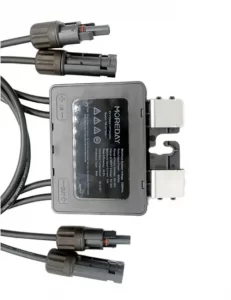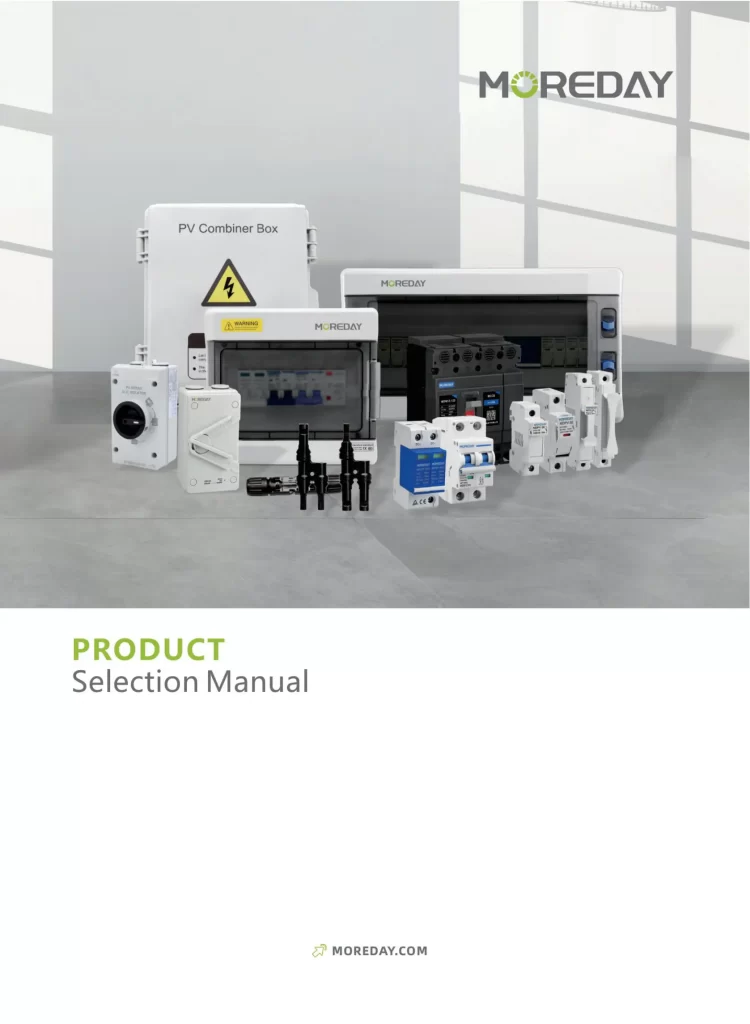Introduction
Solar power optimizers play a critical role in maximizing the efficiency and performance of solar photovoltaic (PV) systems. These devices, often overlooked but essential components of a solar array, optimize the output of individual solar panels to ensure optimal energy production under varying conditions.
In the dynamic world of renewable energy, solar power optimizers stand out as key players in enhancing the efficiency and performance of solar photovoltaic (PV) systems. As the demand for sustainable energy solutions continues to grow, understanding the role and significance of these optimizers becomes increasingly crucial.
Solar power optimizers are electronic devices that are installed at the module or string level in a solar PV system. Their primary function is to manage the output of each solar panel to maximize energy yield, improve system reliability, and enhance monitoring capabilities.
Solar power optimizers represent a breakthrough in solar technology, offering a sophisticated solution to maximize energy production from solar panels. Unlike traditional solar inverters, which operate at the system level, optimizers work at the module level, providing individual control and optimization for each solar panel within a system.
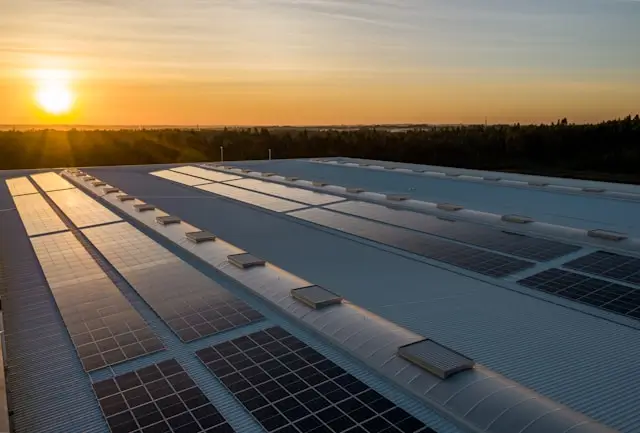
Photo by Nuno Marques on Unsplash
Functioning of Solar Power Optimizers
Solar power optimizers are integral components of solar photovoltaic (PV) systems, designed to enhance the performance and efficiency of solar panels. Understanding how these optimizers function is crucial for grasping their importance in maximizing energy yield and system reliability.
1. Maximizing Energy Harvest
Solar power optimizers operate by employing a technique known as Maximum Power Point Tracking (MPPT). This process involves continuously monitoring the voltage and current of each individual solar panel to determine the point at which it produces the maximum power output. By dynamically adjusting the operating conditions of the panels, optimizers ensure that they operate at their peak efficiency, even under varying environmental conditions such as changes in sunlight intensity or temperature fluctuations.
2. Mitigating Shading Effects
Shading is a common challenge faced by solar PV systems, as even partial shading on one panel can significantly reduce the overall energy output of the entire array. Solar power optimizers address this issue by allowing each panel to operate independently, decoupling them from the effects of shading on neighboring panels. By optimizing the power output of shaded panels individually, optimizers prevent energy losses and ensure that the system continues to generate electricity efficiently, even in partially shaded conditions.
3. Enhancing System Reliability
Another crucial aspect of solar power optimizers is their role in improving the overall reliability and performance of solar PV systems. By isolating the performance of individual panels, optimizers minimize the impact of potential issues such as panel degradation, soiling, or malfunctions. In the event of a problem with one panel, the rest of the system can continue to operate unaffected, maximizing uptime and reducing the risk of energy loss.
4. Monitoring Capabilities
Many solar power optimizers are equipped with advanced monitoring capabilities that provide real-time insights into the performance of the PV system. These monitoring features allow system owners to track key metrics such as energy production, panel efficiency, and system health. By providing detailed performance data, optimizers enable proactive maintenance and troubleshooting, helping to identify and address issues before they escalate into larger problems.
5. Communication with Inverters
In addition to optimizing the performance of individual panels, solar power optimizers also play a crucial role in communication with the central inverter of the PV system. Optimizers ensure that the power output of each panel is synchronized and compatible with the input requirements of the inverter. This coordination ensures smooth operation of the entire system and maximizes overall energy efficiency.
Types of Solar Power Optimizers
Solar power optimizers come in various types, each offering unique features and benefits tailored to different solar PV system configurations and requirements. Understanding the different types of optimizers is essential for selecting the most suitable option for a particular application.
1. Module-Level Power Optimizers
Module-level power optimizers are installed directly on individual solar panels, typically mounted beneath or adjacent to each panel. These optimizers optimize the performance of each panel independently, allowing for granular control and maximum energy yield. Module-level optimizers are particularly effective in scenarios where shading or panel-level variations in performance are prevalent. By ensuring that each panel operates at its maximum power point, module-level optimizers can significantly enhance the overall energy production of the system.
2. String-Level Power Optimizers
String-level power optimizers are installed at the string level, typically connected to a string of multiple solar panels wired in series. Unlike module-level optimizers, which optimize the performance of individual panels, string-level optimizers optimize the output of entire strings of panels. While less granular than module-level optimization, string-level optimizers still offer improved performance compared to traditional string inverters. String-level optimizers are suitable for installations where shading is minimal, and a balance between performance and cost-effectiveness is desired.
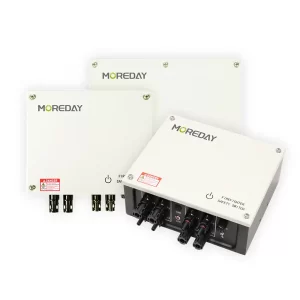
3. Centralized Power Optimizers
Centralized power optimizers are installed at the central inverter of the solar PV system, optimizing the output of the entire array. Unlike module-level and string-level optimizers, which operate at the panel or string level, centralized optimizers optimize the overall system performance. While less common than module-level and string-level optimizers, centralized optimizers offer simplicity and cost-effectiveness, particularly for larger-scale installations where individual panel-level optimization may not be necessary. Centralized optimizers are often used in conjunction with traditional string inverters to maximize energy yield and system efficiency.
4. Microinverters
While not strictly categorized as power optimizers, microinverters perform a similar function by converting the DC output of individual solar panels into AC electricity directly at the panel level. Microinverters offer advantages such as panel-level optimization, increased system reliability, and simplified installation and maintenance. However, they tend to be more expensive than traditional string inverters and may not be suitable for all applications.
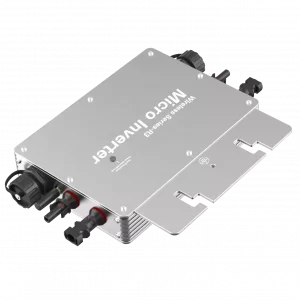
5. DC Optimizers
DC optimizers are similar to module-level power optimizers but operate at the DC level, optimizing the DC output of each panel before it is converted to AC electricity by the central inverter. DC optimizers offer advantages such as improved efficiency, reduced losses, and enhanced monitoring capabilities. They are particularly suitable for installations with shading or panel-level variations in performance, where maximizing energy yield is a priority.
Benefits of Solar Power Optimizers
Solar power optimizers offer a multitude of benefits that contribute to the overall performance, efficiency, and reliability of solar photovoltaic (PV) systems. Understanding these benefits is essential for system owners to make informed decisions about integrating optimizers into their solar installations.
1. Increased Energy Yield
One of the primary benefits of solar power optimizers is their ability to maximize the energy yield of solar PV systems. By optimizing the performance of individual solar panels, optimizers ensure that each panel operates at its peak efficiency, even under challenging conditions such as partial shading or panel-level variations. This results in higher energy production and greater overall yield from the solar array, maximizing the return on investment for system owners.
2. Improved System Performance
Solar power optimizers play a crucial role in improving the overall performance and efficiency of solar PV systems. By mitigating the effects of shading, soiling, and other environmental factors, optimizers ensure that the system operates at its maximum capacity at all times. This leads to more consistent and reliable performance, reducing the risk of downtime and energy losses, and enhancing the overall reliability of the system.
3. Enhanced Monitoring and Maintenance
Many solar power optimizers come equipped with advanced monitoring capabilities that provide real-time insights into the performance of the PV system. These monitoring features allow system owners to track key metrics such as energy production, panel efficiency, and system health. By identifying issues such as panel degradation, soiling, or malfunctions early on, optimizers enable proactive maintenance and troubleshooting, minimizing downtime and maximizing energy production.
4. Longer Lifespan of Solar Panels
Optimizing the performance of individual solar panels helps to prolong their lifespan and ensure their long-term reliability. By operating each panel at its optimal operating point, optimizers reduce stress on the panels and minimize the risk of degradation over time. This extends the lifespan of the panels and maximizes their energy production over the course of their operational life, enhancing the overall sustainability of the solar PV system.
5. Flexibility and Scalability
Solar power optimizers offer flexibility and scalability, allowing for easy expansion and customization of solar PV systems. Whether it’s adding additional panels to an existing installation or integrating new technologies such as energy storage or smart grid functionality, optimizers provide the flexibility to adapt to changing energy needs and requirements. This scalability ensures that solar PV systems can grow and evolve along with the needs of system owners, maximizing their long-term value and utility.
6. Financial Benefits
In addition to the technical advantages, solar power optimizers offer significant financial benefits for system owners. By maximizing energy production and efficiency, optimizers help to reduce electricity bills and increase the return on investment for solar PV systems. Additionally, many optimizers come with warranties and performance guarantees, providing peace of mind and additional financial protection for system owners.

Factors to Consider When Choosing a Solar Power Optimizer
Selecting the right solar power optimizer is crucial for ensuring optimal performance, reliability, and efficiency of a solar photovoltaic (PV) system. Several key factors should be taken into consideration when evaluating different optimizer options to ensure they meet the specific requirements and objectives of the installation.
1. System Size and Configuration
The size and configuration of the solar PV system are critical factors in determining the type and number of optimizers required. Larger systems may benefit from module-level optimization, where each solar panel is equipped with its own optimizer for granular control and maximum energy yield. Smaller systems may suffice with string-level optimization, which optimizes the output of multiple panels connected in series using a single optimizer.
2. Budget and Cost Considerations
Budget constraints play a significant role in the selection of solar power optimizers. While module-level optimization offers the highest level of performance and efficiency, it also tends to be more expensive than string-level or centralized optimization options. System owners should weigh the upfront cost of optimizers against the long-term benefits of increased energy production and system reliability to determine the most cost-effective solution for their needs.
3. Compatibility with Inverter Technology
Solar power optimizers must be compatible with the existing inverter technology used in the PV system. System owners should ensure that the optimizers are compatible with both the brand and model of the inverter, as well as any communication protocols used for monitoring and control. Compatibility issues can lead to inefficiencies and performance degradation, so it’s essential to verify compatibility before purchasing and installing optimizers.
4. Monitoring and Reporting Features
Optimizers with advanced monitoring and reporting features provide valuable insights into the performance of the PV system. System owners should look for optimizers that offer real-time monitoring, remote access, and detailed reporting capabilities. This data allows for proactive maintenance and troubleshooting, helping to identify and address issues before they escalate into larger problems and ensuring optimal system performance over time.
5. Installation and Maintenance Requirements
Consideration should be given to the installation and maintenance requirements of solar power optimizers. While some optimizers may require professional installation by certified technicians, others may be suitable for DIY installation by knowledgeable homeowners. Similarly, maintenance requirements vary depending on the type and brand of optimizers, with some requiring regular inspection, cleaning, and firmware updates to ensure optimal performance and longevity.
6. Warranty and Support
When choosing a solar power optimizer, it’s essential to consider the warranty and support options provided by the manufacturer. Look for optimizers with comprehensive warranties and responsive customer support to address any issues or concerns that may arise during installation or operation. A reliable warranty and support package provide peace of mind and additional financial protection for system owners, ensuring confidence in the long-term performance and reliability of the optimizers.
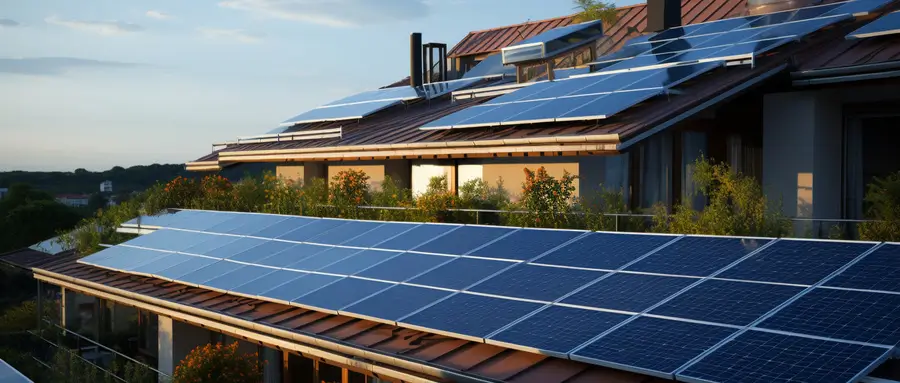
Conclusion
Solar power optimizers play a pivotal role in maximizing the efficiency, performance, and reliability of solar photovoltaic (PV) systems. By optimizing the output of individual solar panels, mitigating shading effects, enhancing monitoring capabilities, and improving system reliability, optimizers ensure that solar PV systems operate at their peak potential, even under challenging conditions.
When selecting a solar power optimizer, it’s essential to consider factors such as system size and configuration, budget and cost considerations, compatibility with inverter technology, monitoring and reporting features, installation and maintenance requirements, and warranty and support options. By carefully evaluating these factors and choosing the most suitable optimizer for their specific needs and objectives, system owners can maximize the long-term value and effectiveness of their solar PV systems.
Derek Ke
Hey, I’m Derek Ke, the founder of Moredaydc.com, an expert in solar electrical products and ev charging.
In the past 15 years, we have helped 60 countries and nearly 500 customers (such as farms, residences, industrial and commercial) solve new energy and green power problems. This article aims to share more knowledge about solar electricity and new energy with everyone, so that green electricity can enter every home.
Common Queries
Frequently Asked Questions
please feel free to contact us.
A: While inverters convert DC electricity to AC for grid connection, solar power optimizers operate at the module level, optimizing the DC output of individual panels.
A: Yes, solar power optimizers can operate effectively in various weather conditions, including partial shading, cloudy skies, and low-light conditions.
A: Most solar power optimizers are compatible with a wide range of solar panel brands and configurations, but it’s essential to verify compatibility before installation.
A: While optimizers themselves do not directly impact the lifespan of solar panels, they can help maximize energy production and mitigate factors that contribute to panel degradation, indirectly enhancing panel longevity.
A: By maximizing energy production and system efficiency, solar power optimizers can lead to significant cost savings over the lifetime of a solar PV system, offsetting initial investment costs.
Make Electricity Available To All People


